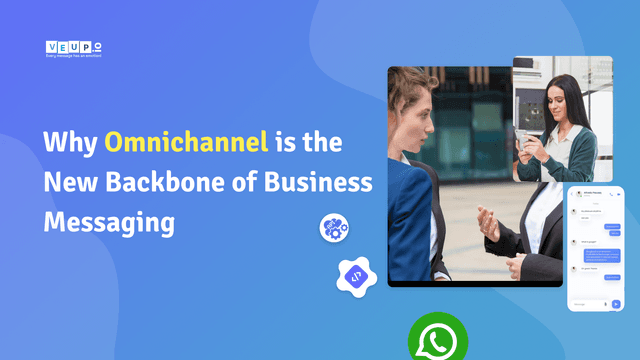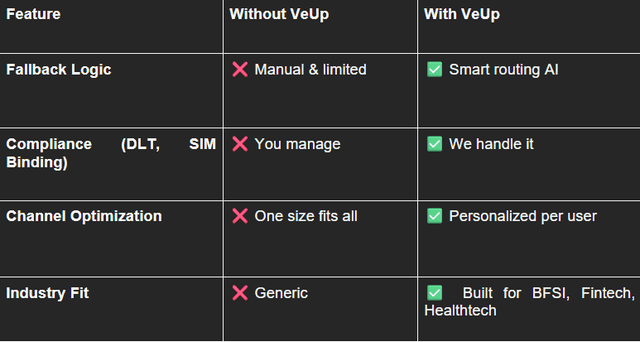Why Omnichannel is the New Backbone of Business Messaging
Madhuri Korekar

What Is Omnichannel Messaging (And Why Most Get It Wrong)
Let’s clear this up first:Omnichannel ≠ Multichannel.
👉 Multichannel means using multiple platforms — like SMS, WHATSAPP BUSINESS API, RCS, VOICE CALL, Email, but often in isolation. Each message is sent independently, with no connection or fallback logic.
👉 Omnichannel, on the other hand, is an intelligent system. It connects all channels under one roof, delivering messages through the best route at the right time, and automatically switching if something fails. Think of it as a GPS for your message, choosing the smartest path to reach your customers.
Why Omnichannel Matters More Than Ever in India
India’s digital economy is booming.
With rising fintech users, ecommerce surges, and digital lending adoption, the volume of mission-critical messages is skyrocketing, from OTPs and KYC alerts to order updates and fraud warnings.
But here’s the catch:
- Not all devices have WhatsApp
- SMS is sometimes undelivered due to DLT template rejection
- Email gets buried
- Voice calls are ignored
One missed message = One lost transaction, user, or opportunity.
Omnichannel messaging ensures zero dead ends.
What Happens Without It? The Risk of “Silent Failures
Silent failures are when a message looks like it’s sent, but is never received or seen. Common causes:
- SIM change
- Grey routes
- Template rejection by telecoms
- Internet unavailability
- Device switched off
- Unverified WhatsApp business number
In multichannel, there's no fix.
In omnichannel, there's a smart fallback, for example: “If WHATSAPP BUSINESS API fails, send SMS → If SMS fails, use RCS, Voice or Email.”
Omnichannel doesn’t just send messages. It delivers certainty.
The VeUp Advantage: India’s Only Dual Engine (Omnichannel + Multichannel)
This matters because:
At VeUp, we built a platform that merges the guarantee of omnichannel with the attention power of multichannel, in a single, AI-backed engine.
- Most CPAAS platforms in India only offer either multichannel or omnichannel
- Aggregators rely on third-party APIs with limited fallback logic
- VeUp’s engine is product-first and compliance-ready
Here’s what that means for your business:

Real-World Use Case: A Leading NBFC Scales OTP Reliability
A top NBFC was losing 20–30% of OTPs due to grey route failures and SIM change fraud. After switching to VeUp:
- Implemented omnichannel fallback
- Enabled smart routing between SMS → WHATSAPP BUSINESS API → RCS→ Voice
- Added SIM-binding to verify device identity
Results:
That’s the VeUp promise: Real-time, real-scale, real results.
- ✅ 28% drop-off reduction
- ✅ 3X increase in successful customer onboarding
- ✅ BFSI – OTPs, EMI reminders
- ✅ 0 downtime — even during peak loan campaigns
Beyond Tech: The Customer Experience Payoff .Omnichannel isn’t just for IT teams.
It’s a tool for:
And when customers feel heard, seen, and updated in real-time? They stick. They engage. They refer.
- Marketers to drive higher conversions
- Product teams to improve UX
- Founders & CXOs to build trust with users
Because great messaging ≠ loud. It’s just always on-point.
Who Needs Omnichannel Messaging Today?
If you're in:
- ✅ BFSI: For OTPs, transactional alerts, and KYC workflows
- ✅ Healthcare: For reports, reminders, and emergency alerts
- ✅ Fintech: For real-time onboarding, EMI updates
- ✅ Ecommerce: For order, return, and delivery tracking
- ✅ Edtech: For attendance, homework, and fee reminders
… you can’t afford to “hope” messages land. You need assurance.